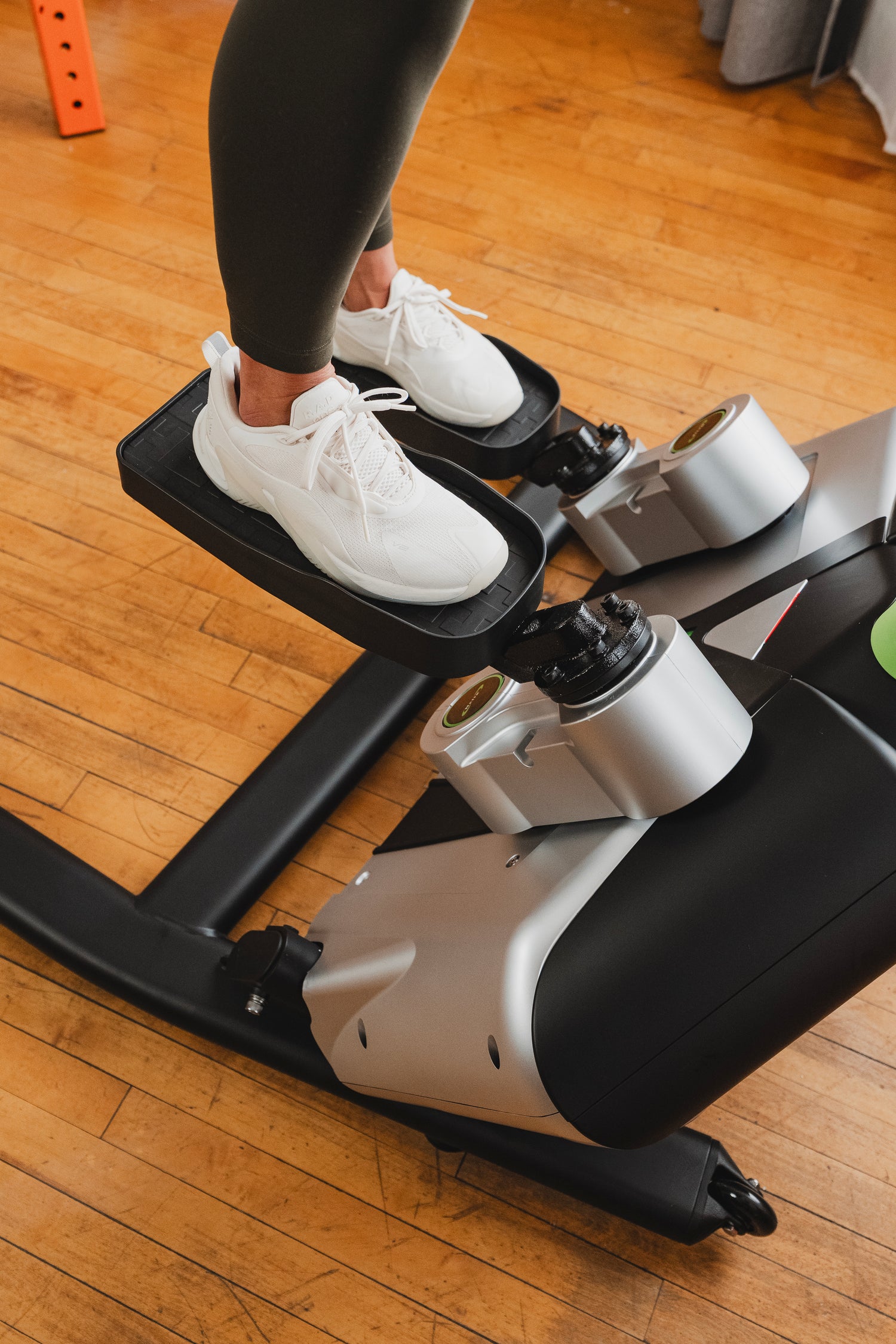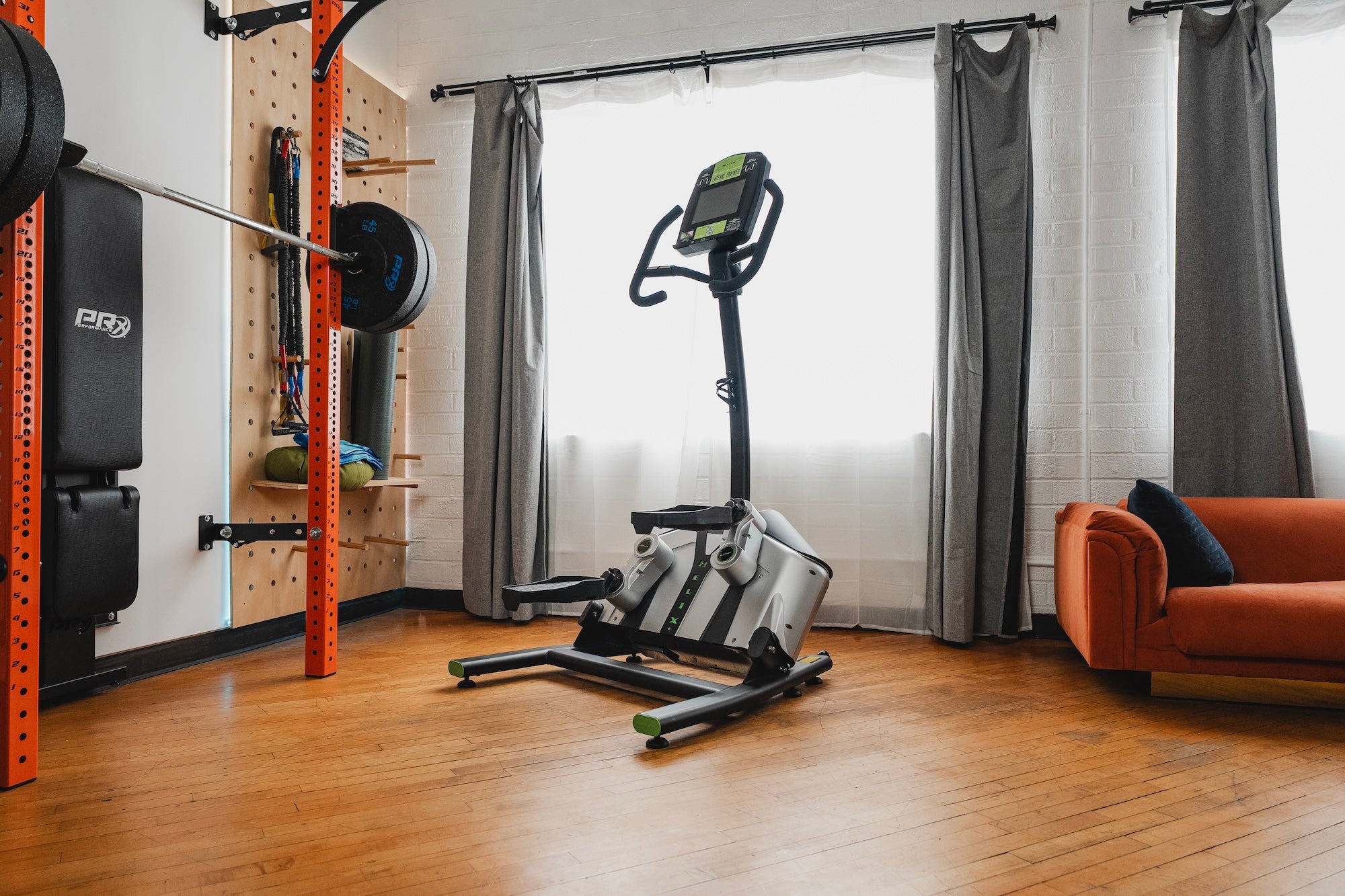
Lateral Elliptical vs. Traditional Elliptical
When it comes to cardiovascular workouts, elliptical trainers have long been a popular choice. Offering low-impact exercises that effectively engage multiple muscle groups, ellipticals have become a staple in gyms and home fitness setups.
However, the fitness world has witnessed a new contender on the rise - the Lateral Elliptical Trainer.
In this comprehensive comparison, we will delve into the features, benefits, and differences between lateral ellipticals and traditional ellipticals. By the end, you'll be better equipped to determine which fitness machine suits your goals and preferences best.
Understandings the basics Between a Traditional Elliptical and Lateral Elliptical (Lateral Trainer)
What is a Traditional Elliptical?
A traditional elliptical is a stationary fitness machine designed to simulate walking, running, or climbing while reducing the impact on joints.
It features two pedal-like platforms that move in an elliptical motion, typically accompanied by handlebars that engage the upper body.
Introducing the Lateral Elliptical (Lateral Trainer)
In contrast, the lateral elliptical takes the elliptical concept to a whole new level by adding a side-to-side or lateral motion to the workout.
This lateral movement targets different muscle groups and provides an additional dimension of exercise.
Clinical Studies have proven that there are many benefits to the Helix Fitness Lateral Trainers.
- Strengthens the Knees & Hips
- Supports & Protects The Knees
- More Intense Focus On The Glutes & Knees
- Provides More Knee Rotation (Key Component Of Healthy Joint Function)
Enhanced Muscle Activation
One of the primary advantages of lateral ellipticals is their ability to engage a broader range of muscles. While traditional ellipticals predominantly focus on the front and back leg muscles, lateral ellipticals also work the inner and outer thigh muscles, promoting balanced muscle development.
Improved Core Strength and Stability
The lateral motion of the elliptical forces the core muscles to engage more actively to maintain stability, resulting in improved core strength over time. This added challenge contributes to better posture and overall body balance.
Enhanced Hip Mobility
Lateral ellipticals encourage a wider range of hip movement compared to traditional ellipticals, promoting hip flexibility and mobility. This is particularly beneficial for athletes and individuals seeking to improve hip joint health.
Greater Caloric Expenditure
Due to the increased muscle activation and core engagement, lateral ellipticals can lead to higher caloric expenditure during workouts compared to traditional ellipticals. This can be advantageous for those aiming to burn more calories and achieve weight loss goals.
Full-Body Workout
Traditional ellipticals provide an excellent full-body workout, engaging both the upper and lower body. The synchronized movements of the arms and legs promote efficient calorie burning and cardiovascular conditioning.
Low-Impact Exercise
Like lateral ellipticals, traditional ellipticals offer low-impact exercises, making them suitable for individuals with joint issues or recovering from injuries. The smooth gliding motion reduces stress on the knees and other weight-bearing joints.
Simplicity and Ease of Use
Traditional ellipticals are straightforward to use, making them ideal for beginners or those who prefer a no-nonsense approach to their workouts. Users can adjust the resistance and incline levels to suit their fitness level and training preferences.
Motion and Muscle Engagement
The most significant difference between lateral ellipticals and traditional ellipticals lies in the motion and muscle engagement. While traditional ellipticals primarily move in a front-to-back motion, lateral ellipticals introduce a side-to-side motion that targets different muscle groups.
Exercise Variety
Lateral ellipticals offer a more diverse range of exercises due to their lateral motion. Users can perform exercises like lateral lunges, side steps, and shuffle movements, adding variety and challenge to their workouts.
Targeted Training
Both ellipticals provide excellent cardiovascular workouts, but lateral ellipticals excel in targeting specific muscle groups like the inner and outer thighs. Traditional ellipticals may be better suited for individuals seeking a well-rounded, full-body workout.
Consider Your Goals and Preferences
When deciding between lateral ellipticals and traditional ellipticals, consider your fitness goals, physical condition, and preferences. If you prioritize enhanced muscle activation, core strength, and hip mobility, a lateral elliptical might be the better option. On the other hand, if you prefer a straightforward full-body workout with low impact, a traditional elliptical may be more suitable.
Test Before Investing
Before making a purchase, try both types of ellipticals at a gym or fitness equipment store. Test how they feel, assess the range of motion, and determine which machine aligns better with your body mechanics and workout preferences.
In conclusion, both lateral ellipticals and traditional ellipticals offer valuable benefits and can significantly contribute to your fitness journey. The lateral elliptical's unique lateral motion targets specific muscle groups and promotes enhanced muscle activation and core strength. Conversely, traditional ellipticals provide a simple, full-body workout with low impact on joints. Ultimately, the choice between the two comes down to your fitness goals, preferences, and body mechanics. Whether you opt for the lateral elliptical or the traditional elliptical, both machines are valuable tools in achieving a healthy and active lifestyle.


